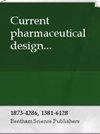弗里德里希共济失调症治疗策略的最新进展:潜在候选药物及其内在机制综述
IF 2.8
4区 医学
Q2 PHARMACOLOGY & PHARMACY
引用次数: 0
摘要
背景:弗里德里希共济失调症(FRDA)是一种罕见的遗传性神经退行性疾病,以进行性共济失调、心肌病和糖尿病为特征。该病是由于线粒体蛋白 frataxin 缺乏所致,frataxin 参与铁硫簇合成和铁代谢。研究目的本综述旨在总结 FRDA 治疗策略开发的最新进展,重点关注潜在候选药物及其作用机制。方法:采用多种方法进行了全面的文献检索:我们使用各种真实的科学数据库进行了全面的文献检索,以确定过去十年中发表的有关 FRDA 潜在治疗策略的研究。使用的检索词包括 "弗里德里希共济失调"、"治疗"、"候选药物 "和 "作用机制"。结果:迄今为止,只有一种药物在 2023 年获得了美国食品及药物管理局的批准;然而,与弗里德雷氏共济失调症相关的研究取得了重大进展,其重点是有可能缓解该疾病症状的各种治疗干预措施。目前已确定了几种有希望治疗 FRDA 的候选药物,它们针对 frataxin 缺乏症的各个方面,旨在恢复 frataxin 水平、减少氧化应激和改善线粒体功能。临床试验取得了不同程度的成功,一些药物显著改善了 FRDA 患者的神经功能和生活质量。结论:虽然 FRDA 治疗策略的开发取得了重大进展,但仍需进一步研究,以优化这些方法,并为患者确定最有效、最安全的治疗方案。要想在 FRDA 治疗中取得最佳疗效,可能需要整合多种治疗策略。本文章由计算机程序翻译,如有差异,请以英文原文为准。
Recent Advances in the Treatment Strategies of Friedreich’s Ataxia: A Review of Potential Drug Candidates and their Underlying Mechanisms
Background: Friedreich's ataxia (FRDA) is a rare hereditary neurodegenerative disorder characterized by progressive ataxia, cardiomyopathy, and diabetes. The disease is caused by a deficiency of frataxin, a mitochondrial protein involved in iron-sulfur cluster synthesis and iron metabolism. Objective: This review aims to summarize recent advances in the development of treatment strategies for FRDA, with a focus on potential drug candidates and their mechanisms of action. Methods: A comprehensive literature search was conducted using various authentic scientific databases to identify studies published in the last decade that investigated potential treatment strategies for FRDA. The search terms used included “Friedreich's ataxia,” “treatment,” “drug candidates,” and “mechanisms of action.” Results: To date, only one drug got approval from US-FDA in the year 2023; however, significant developments were achieved in FRDA-related research focusing on diverse therapeutic interventions that could potentially alleviate the symptoms of this disease. Several promising drug candidates have been identified for the treatment of FRDA, which target various aspects of frataxin deficiency and aim to restore frataxin levels, reduce oxidative stress, and improve mitochondrial function. Clinical trials have shown varying degrees of success, with some drugs demonstrating significant improvements in neurological function and quality of life in FRDA patients. Conclusion: While there has been significant progress in the development of treatment strategies for FRDA, further research is needed to optimize these approaches and identify the most effective and safe treatment options for patients. The integration of multiple therapeutic strategies may be necessary to achieve the best outcomes in FRDA management.
求助全文
通过发布文献求助,成功后即可免费获取论文全文。
去求助
来源期刊
CiteScore
6.30
自引率
0.00%
发文量
302
审稿时长
2 months
期刊介绍:
Current Pharmaceutical Design publishes timely in-depth reviews and research articles from leading pharmaceutical researchers in the field, covering all aspects of current research in rational drug design. Each issue is devoted to a single major therapeutic area guest edited by an acknowledged authority in the field.
Each thematic issue of Current Pharmaceutical Design covers all subject areas of major importance to modern drug design including: medicinal chemistry, pharmacology, drug targets and disease mechanism.

 求助内容:
求助内容: 应助结果提醒方式:
应助结果提醒方式:


